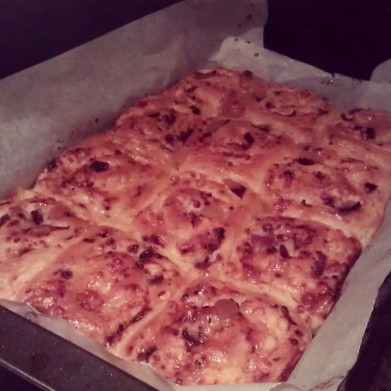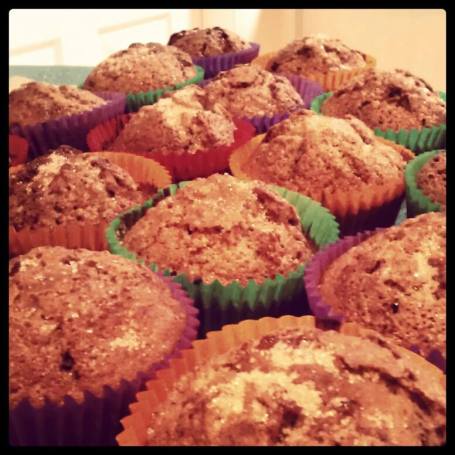The Sunday just gone marked our second attending at Leicester’s excellent Clandestine Cake Club, this time at Deli Flavour in the recently refurbished Silver Arcade. The theme this month was “Memory Lane”, though I must shamefully admit that the caked I baked has no link to memories whatsoever. I just fancied baking a grapefruit cake, so I err…did.
Before I divulge the recipe, I would like to draw attention to the fact that on 3rd May I shall be cycling 100 miles to raise money for Alzheimer’s Research and YoungMinds. Please follow this link if you would like to donate, which would make me and my little legs very happy indeed! In some crazy twist of fate I also believe this is our 100th post. Huzzah!
Ingredients
Cake
1 grapefruit
250g sugar
225g stork/butter/spread
3 eggs
300g self raising flour
1 tsp baking powder
1 tsp cinnamon
1 tsp ground ginger
Icing
50g stork/butter/spread
200g cream cheese
300g icing sugar
zest of a lemon
2 stem ginger balls, finely sliced
Method
Boil the grapefruit in a pan for 20 minutes, drain the water, then repeat. (I must admit I don’t entirely understand the change of water but the recipe told me to so I did!). Leave the grapefruit to cool before removing pips and blending to a pulp (the whole thing, including skin).
Preheat the oven to 18ºC/350ºF/gas mark 4Beat the stork and sugar together. Beat in the eggs one at a time, followed by the pulp. Fold in the flour, baking powder, cinnamon and ground ginger. Divide the mix between two well greased/lined 20cm cake tins. Bake for 20-25 minutes until golden brown. Leave in the tins for a few minutes before turning out onto a cooling rack.
To make the icing, beat the butter and half the icing sugar together. Add the cream cheese, remaining icing sugar, zest and sliced stem ginger and beat until smooth. Keep in the fridge until the cake has cooled enough to ice it. Spread half the icing on each sponge, starting in the centre and spreading it outwards in ever increasing circles. For the bottom layer leave a 1-2cm gap around the edge so that when you place the upper layer on top the icing doesn’t splurge out. Place one on top of the other, decorate with a few strips of lemon zest. Share with friends at your local cake club!
J







